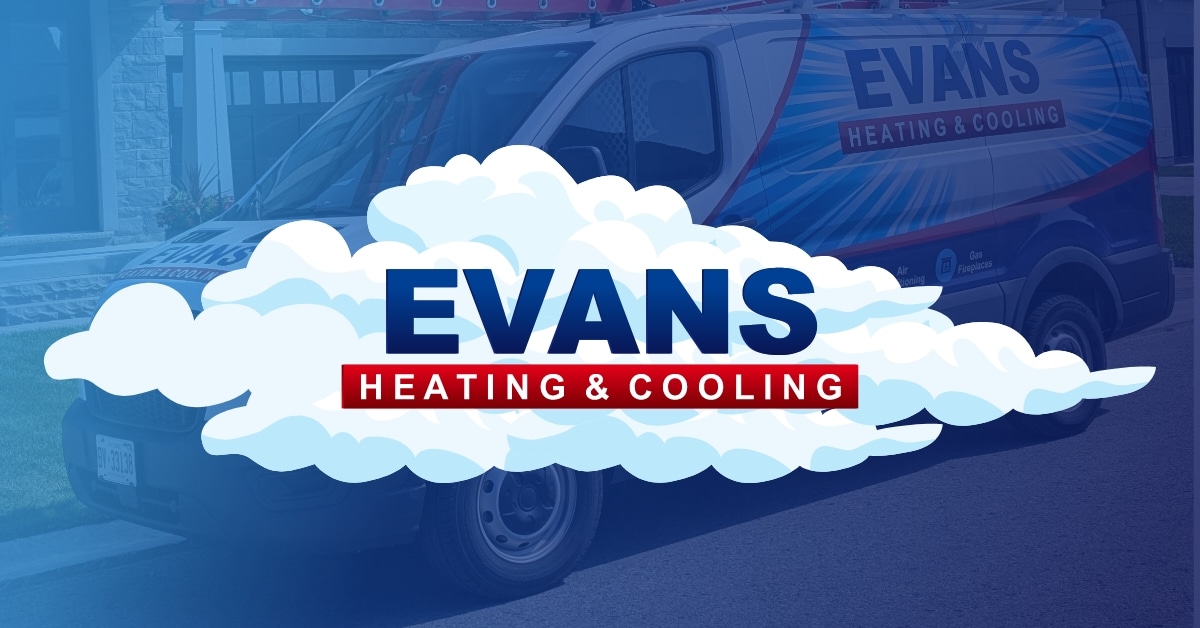
Practical and Effective Tips on Saving Energy in Your Home
Living near the majestic Niagara Falls comes with its own set of challenges and rewards, particularly when it comes to energy consumption. The region's unique weather patterns and environmental conditions make it crucial to adopt energy-efficient practices. But where do you start?
Understanding Your Energy Usage by Conducting an Energy Audit
The first step to saving energy is knowing how much you're using. An energy audit can help you understand where your energy goes. You can hire a professional or do a simple audit yourself. Look for drafts, inefficient appliances, and areas where you might be overusing electricity.
Identifying Major Energy Drains
Common culprits include heating and cooling systems, water heaters, and old appliances. By pinpointing these energy drains, you can take targeted action to reduce your consumption.
Find out about Energy Star Canada Products Starndards.
Caulking
The cost of improving the airtightness of your home through caulking is low compared with the subsequent fuel savings and increased comfort.
- Silicone caulking is ideal for metal, glass, glazed tile and plastic surfaces because it sticks, flexes and does not shrink over time.
- Acrylic latex caulking is a general-purpose sealant that sticks best to porous materials like wood and concrete. All-purpose caulking is good for both interior and exterior use, including bathrooms and kitchens.
- Polyurethane caulking performs well on both porous and non-porous surfaces, is flexible, paintable, long-lasting and hard as nails.
A heat-resistant caulking should be used around sources of heat, such as chimneys, light fixtures and fan motors. It is wise not to caulk in an area where the temperature is below 5°C (40°F), as the compound will become stiff and difficult to work. Caulking should be used for its intended purpose only. For example, an exterior sealant can be a health hazard if used indoors. To make sure caulking sticks well, clean the surface area thoroughly first and allow it to dry before you caulk.
When improving your home's airtightness, take into account the effect on ventilation.
Lighting
The wattage rating tells how much electricity a bulb uses, not how bright it is. Compact fluorescent light bulbs are a bright idea. They use less electricity and last up to 10 times longer than incandescent bulbs.
- ENERGY STAR® labelled compact fluorescent light bulbs use 75 percent less energy than incandescent bulbs.
- One 100-watt incandescent bulb produces the same amount of light as two 60-watt bulbs and uses less energy.
Cleaning light fixtures regularly removes dust buildup and allows for maximum light output.
- Standard incandescent bulbs use only 5 to 8 percent of their energy to produce light.
- The rest is dissipated as heat.
- Lamps placed where their light can reflect off at least two walls, such as in a corner, provide the most light for your money.
Many devices can help save energy on lighting. Look for automatic timers, motion sensors and dimmers.
- Linear fluorescent tubes are suitable for your kitchen, bathroom and utility area, and come in all sorts of styles and lengths.
- Fluorescent lighting fixtures should be metallic, grounded and shielded to prevent electromagnetic interference with other household equipment.
- A halogen lamp is like an incandescent lamp with a special reflector to improve light focus.
- Outdoor halogen lighting is great for gardens and pathways, and it uses much less energy than standard incandescent lights.
- Halogen lighting has light output that is similar to a regular incandescent bulb but uses up to 40 percent less energy.
Toilets
Installing a water-saver flush kit in your toilet can save you thousands of litres of water per year. Replacing large-volume toilets with 6-litre-per-flush models saves at least 70 percent of the water used.
Showers
An energy-efficient shower head or flow controller conserves energy without affecting water pressure. A low-flow shower head saves as much as 60 percent of the water used by a conventional fixture. Dripping taps can waste 9000 litres of hot water each year. Replace leaky washers and save the hot water for when you really need it!
Ceiling Fans
A ceiling fan equipped with a large range of speeds provides the greatest number of options for comfort and noise control.
Landscaping
Trees and shrubs in your yard sheild your home from road noise and prevailing winds.
- Deciduous trees lower your energy bill all year, providing shade in summer and sunshine in winter.
A trellis draped with vines or climbing perennials cools ground-floor windows facing west. Low-growing evergreen shrubs planted beside basement walls help keep warmth in and winter winds out.
- Flower gardens with tall plants help retain moisture in the ground. With larger gardens you spend less energy on watering and mowing your lawn.
- Awnings installed on upper-floor windows help control heat gain in the summer.
Consider a low-maintenance landscape – one that requires little more water than nature provides. Often called xeriscaping, the principles of a low-maintenance landscape are as follows:
- A reduced amount of lawn
- Proper plan selection that makes use of native grasses, shrubs and trees
- The use of rain barrels/roof drainage
- Mulching to reduce evaporative losses around shrubs and trees
- A proper irrigation system
- Planned maintenance
Weatherstripping
Weatherstripping prevents air from leaking through gaps around doors and the moving parts of an operable window and should be easy to replace.
- To be effective, it must close gaps completely.
- Weatherstripping should be flexible and spring back to its original shape.
- It should allow you to open and close windows and doors easily.
- Weatherstripping can be applied to the tops and sides of any door frame.
V-shaped weatherstripping creates an excellent seal by making contact with the edge of the door. It maintains a good seal even if the door warps.
At the bottom of the door, apply weatherstripping to either the sill or the door itself. When weatherstripping your door, use a durable material that can withstand traffic but is flexible enough to adapt to changes caused by humidity and temperature.
Storm Doors
An easy way to improve ventilation and increase comfort inside your home during the summer is to use storm doors with screens.
Major Appliances
You can buy years of energy savings by choosing appliances with the symbol.
Refrigerators
Organizing the food on your refrigerator shelves will allow for ample airflow and efficient operation. Your refrigerator accounts for 11 percent of your household's total energy consumption, so buying an energy-efficient model makes good sense.
- Cool hot food before placing it in the refrigerator so that you don't let valuable energy go to waste.
Today's energy-efficient refrigerators use 50 percent less energy than models made 10 years ago. ENERGY STAR®qualified refrigerators have a more energy-efficient compressor and better insulation than conventional models.
Clothes Washers
A water-level control or a small-load basket helps you save water when washing smaller loads.
- Front-loading clothes washers use about 40 percent less water per load and 50 percent less energy than top-loading models.
Dryers
A dryer with a sensor that turns the machine off automatically when clothes are dry helps save energy. You will get the most out our your clothes dryer if you clean the filter before every load.
Freezers
A freezer that is too big for your needs wastes energy and money. A rule of thumb is to allow 130 litres of freezer capacity per person.
- Chest freezers are more energy efficient than upright models.
- Cold air stays in better when the door is opened.
Your freezer or refrigerator must work harder when placed next to a heat source such as a radiator, heating vent, washer, dryer or furnace. You can test your refrigerator or freezer door seal by closing it on a sheet of paper. Replace the seal if the paper slides out easily.
Dishwashers
Using a dishwasher saves energy. Five minutes of pre-rinsing dishes under the tap can use up to 115 litres of water. Today's dishwashers are about 95 percent more energy efficient than those bought in 1972: your old one may be costing you more money than buying a new one.
Ranges
Self-cleaning ovens generally have more insulation than regular ovens. This means energy savings every time you cook. Turning on the interior light to check your dinner instead of opening the door makes the best use of your oven's energy.
Appliances – General
You can buy years of energy savings by choosing appliances that carry the ENERGY STAR® symbol. The EnerGuide rating on a major appliance helps you choose the most efficient model for your needs. The EnerGuide label lets you estimate the annual cost of electricity to operate the appliance.
Heat Recovery Ventilators
Heat recovery ventilators (HRVS) improve indoor air quality by expelling stale indoor air continuously and using its heat to pre-heat the incoming fresh air. Dirty HRV filters weaken the performance of the system. To clean most filters, simply remove, dust or wash with soap and water, and reinsert.
Fireplaces
A ceiling fan near a gas fireplace will push valuable hot air down into the whole living area. Air leaks are common at the joint between the chimney and the wall. To seal them, remove the trim (if necessary) and apply heat-resistant caulking.
A gas fireplace can usually be inserted into an existing wood fireplace. It also can be installed as a completely new hearth. Traditional wood fireplaces draw valuable heat out of the house, while new gas fireplaces with sealed units maximize heat use. An efficient gas fireplace may lower energy consumption if installed where its heat can reach many parts of the house.
Accessories such as tightly fitted glass doors and outdoor air intakes help improve fireplace efficiency. A carbon monoxide detector should be installed near all fuel-combustion appliances. If your gas fireplace has a continuously burning pilot light, it should be turned off during the summer or when you are away for a long time.
Thermostats
Lowering the thermostat setting at bedtime and before leaving the house reduces your energy bills without affecting your comfort. By installing a programmable thermostat, you can save 2 percent on your heating bill for every 1°C (2°F) you lower the thermostat.
Look for a thermostat with the ENERGY STAR® symbol on it.
Room Air Conditioners
A room air conditioner works just like a refrigerator; it takes heat from the space that is being cooled and transfers it to another place.
- Setting the thermostat of your room air conditioner at 25°C (77°F) provides the most comfort for the least cost. ENERGY STAR® qualified room air conditioners use at least 10 percent less energy than conventional models.
- A room air conditioner filter should be cleaned once a season.
- A dirty air filter reduces airflow and may even damage the unit.
A poorly performing air conditioner should be serviced without delay. Leaking refrigerant not only reduces the unit's efficiency – it is also emitting greenhouse gases that contribute to climate change.
Water Heaters
Switching to a high-efficiency water heater could save you up to $100 on your energy bill every year.
Bathroom Exhaust Fans
Using your bathroom fan gets rid of damp, stale air quickly and improves indoor air quality. You can compare the sound level of bathroom fans (measured in sones). Some models, rated at under 1.0 sone, are as quiet as a whisper. A bathroom fan with an automatic humidity sensor runs the fan just long enough to remove excess moisture and then turns itself off to save electricity.
Microwaves
You can save up to 50 percent of your cooking energy costs by using a microwave oven instead of a conventional oven. Microwave ovens cook food faster than conventional ovens because the energy goes directly into heating the food, not the oven or utensils.
Food cooks faster when placed at the edge of the rotary tray, as more microwaves can interact with the food there than at the centre. Cooking in a microwave oven does not add unwanted heat to your kitchen.
Electric Kettles
Kettles heat water more efficiently than a range-top element or a microwave oven. Choose one with an automatic shut-off button and a heat-resistant handle. Cleaning your electric kettle regularly with boiling water and vinegar removes mineral deposits inside it that reduce its energy efficiency.
Toaster Ovens
A toaster oven uses much less energy than a conventional oven. It is also faster and more convenient for cooking small quantities of food. To operate a toaster oven energy efficiently, make sure that air can circulate freely around the appliance.
Electric Frying Pans
An electric frying pan requires less electricity than a range top to cook the same quantity of food.
Barbecues
Gas barbecues save energy during hot weather, when indoor cooking can heat up your home and increase air-conditioning needs.
Paints
Paint that is low in volatile organic compounds (VOCS) contains fewer solvents than regular paint, so fewer environmental pollutants are emitted into the air. White walls and ceilings reflect significantly more light into a room than do dark surfaces.
Sump Pumps
Sump pumps prevent moisture problems by channeling excess water away from your home to a sanitary main or storm water pipe.
Dehumidifiers
Running a dehumidifier in the basement on muggy summer days reduces condensation on foundation walls and floors.
Hygrometers
Determining the humidity level in your home with a hygrometer can help you decide whether you need to act to prevent moisture damage.
Foam Gaskets
Foam gaskets made to fit behind the cover plates of electrical receptacles, switches and lighting fixtures reduce air leakage.
Photocell Timers
Photocell timers react to sunlight. They turn outdoor lights off during the day and on at night and help extend bulb life.
Electric Timers
Programmable timers with an automatic on-off switch help extend product life and minimize energy use.
Outdoor Lighting With Motion Sensors
Outdoor lights with motion sensors operate only when they detect movement, providing home security as well as energy savings.
Aluminum Tape
Aluminum tape wrapped around joints in heating and cooling ducts can help reduce costly air leakage.
Eavestroughs
When working properly, eavestroughs help guide rain water away from the foundation of your house and prevent moisture problems.
Roof Vents
For good cross-ventilation, install attic vents at the eaves and peak of your roof.
Central Vacuum Systems
A central vacuum cleaner expels air and fine particles outside the home, contributing to better, healthier air quality inside.
Allergy sufferers in particular benefit from a central vacuum system. Cleaning is also much quieter with a central vacuum system, as the main power unit is mounted away from the living area.
Stove Elements
Choosing the right pot size for a stove element means using energy most efficiently.
Slow Cooking
Extending cooking times with a slow cooker not only lets flavours mingle better, but also reduces energy use and chances of scorching.
Contributing to the Benefits of Saving Energy in Your Home
Saving energy in your home near Niagara Falls is not only possible but also beneficial for your wallet and the environment. By understanding your energy usage, making smart upgrades, and adopting energy-efficient practices, you can significantly reduce your energy consumption. Start small, involve your family, and take advantage of available incentives. Every step you take brings you closer to a more sustainable and cost-effective lifestyle.






